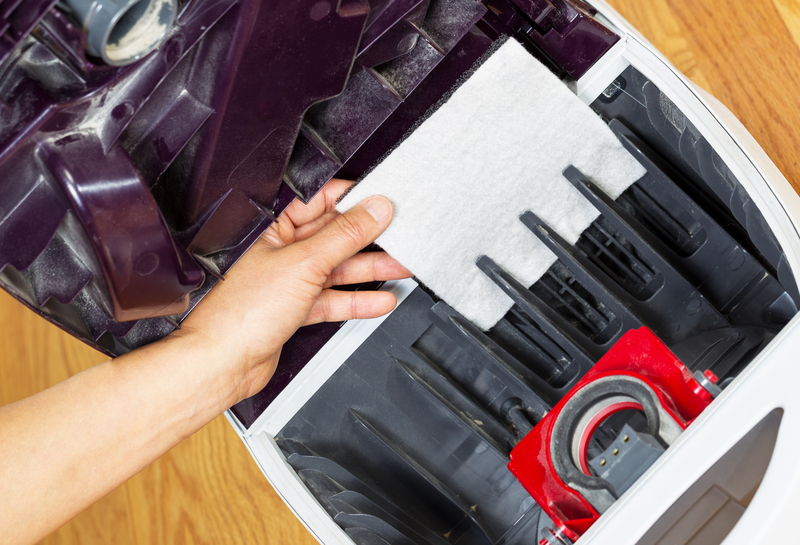Create a Pet-Friendly Odor-Free Home
Posted on 19/06/2025
Create a Pet-Friendly Odor-Free Home: The Ultimate Guide
Pets fill our homes with joy, love, and companionship, but they can also bring along unwanted odors. From dog dander to litter box smells, keeping your home fresh while coexisting with furry friends presents a unique challenge. The great news? Creating a pet-friendly odor-free home is possible with practical strategies, smart cleaning routines, and pet-specific solutions. Read on for comprehensive ways to eliminate pet odors, maintain a healthy home environment, and foster a harmonious space for both humans and their animal companions.

Why Pet Odors Occur
Understanding where pet smells come from is essential to eliminating them. Common sources include:
- Pet fur and dander: Shed fur, skin flakes, and saliva can create a musty environment.
- Accidents and urine: Occasional accidents, especially in young or elderly pets.
- Litter boxes and cages: Not cleaning these areas regularly causes odors to linger.
- Pet bedding: Blankets, beds, and toys collect oils and smells over time.
- Dirty paws and coats: Pets bring in outdoor dirt, bacteria, and allergens.
Identifying the source empowers you to target smells at their origin and sustain a fresh, healthy living space.
Smart Strategies for a Pet-Friendly Odor-Free Home
1. Choose Pet-Safe Cleaning Products
Many off-the-shelf cleaners contain chemicals that are harmful to pets. Opt for pet-safe, fragrance-free, and non-toxic cleaners whenever possible. Natural alternatives like vinegar, baking soda, and enzymatic cleaners are excellent at neutralizing pet smells without jeopardizing your pet's health.
2. Frequent Vacuuming and Dust Removal
Pet hair and dander accumulate quickly, especially in high-traffic areas. To maintain a fur-free, odorless home environment:
- Vacuum carpets, rugs, and upholstery two to three times per week.
- Use a vacuum with a HEPA filter to trap microscopic particles.
- Dust hard surfaces regularly with microfiber cloths to capture hair and dander.
Tip: Consider investing in an automatic robot vacuum if your schedule is tight or your pets shed heavily.
3. Wash Pet Bedding and Accessories Regularly
Pet beds, blankets, and toys absorb moisture and body oils, becoming a breeding ground for bacteria. For a truly odor-free home with pets:
- Wash all pet bedding weekly in hot water with mild, unscented detergent.
- Use pet-safe disinfectants on hard toys and accessories.
- Rotate and air out items between cleanings.
4. Maintain Litter Boxes and Cages
For cat owners, controlling cat litter box smell is essential. Likewise, owners of rabbits, guinea pigs, and birds must keep cages clean. Here's how:
- Scoop litter boxes daily; replace litter and wash the box weekly with soap and warm water.
- Use high-quality, odor-absorbing litter such as clumping clay, silica, or natural pine.
- Clean cages every other day, removing uneaten food and waste promptly.
- Place a small open box of baking soda nearby (out of pet reach) to neutralize lingering odors.
5. Bathing and Grooming: Essential for Odor Prevention
Regular grooming not only improves your pet's health; it also dramatically reduces odors. Follow these crucial steps:
- Bathe dogs according to their breed's needs (generally every 2-4 weeks).
- Brush pets daily to control shedding and distribute skin oils evenly.
- Check and clean ears, which can accumulate wax and odor-causing bacteria.
- Trim nails as needed to prevent dirt buildup.
Improve Indoor Air Quality for an Odor-Free Pet Home
1. Add Air Purifiers
A top-notch air purifier with a HEPA filter effectively removes pet dander, allergens, and lingering smells. Place air purifiers in main living spaces and pet sleeping areas for best results.
2. Enhance Ventilation
Stale, poorly ventilated rooms trap smells. Open windows regularly or use exhaust fans to facilitate air exchange. Fresh air helps dilute and carry away pet odors naturally.
3. Natural Deodorizers
Certain household items improve air quality and combat odors, while being safe for pets:
- Activated charcoal filters or bags in discreet areas to absorb smells.
- Houseplants such as spider plant, areca palm, and bamboo palm that naturally filter air (always check plant safety for pets).
- Baking soda bowls or sachets placed safely out of your pet's reach.
Design Tips for a Pet-Friendly, Odor-Free Home
1. Choose Easy-Clean Flooring
Carpeting traps odors and is difficult to keep clean. If you're designing or updating your home:
- Opt for hard surfaces like tile, hardwood, or laminate which are quick to clean and resistant to staining.
- Area rugs should be machine washable and have a non-slip backing.
- Consider low-pile rugs that trap less fur and debris.
2. Pet-Safe Fabrics and Furniture
Furniture can be a magnet for pet hair and smells. Select materials designed to repel stains and withstand washing:
- Microfiber, leather, or tightly-woven fabrics are more pet-resistant.
- Use removable, washable slipcovers and cushion covers.
- Vacuum and spot-clean furniture frequently to maintain a fresh, odorless home.
3. Create Specific Pet Zones
Designating one or two areas for your pet not only reduces the spread of messes, but also makes deep cleaning easier. Use washable mats, beds, and crate pads and keep litter boxes in well-ventilated, low-traffic rooms.
Top Pet Odor-Removal Products and Solutions
Many products claim to remove pet odors, but some stand out for their effectiveness and safety:
- Enzyme-based cleaners: Break down and eliminate urine, feces, and vomit odors rather than just masking them.
- Ozone generators: Use cautiously and only in unoccupied rooms; they break down organic odors at the source.
- Pet-safe air sprays: Natural sprays based on essential oils, like lavender or lemongrass* (*check essential oil safety for your pet species!)
- Litter additives: Specialized powders or crystals, added to litter boxes to extend freshness.
Dealing with Hard-to-Remove Pet Odors
Tips for Eliminating Stubborn Odors from Carpets and Furniture
Even the most diligent pet parent may face an accident or spill. Here's how to tackle it:
- Blot up messes immediately to prevent them from seeping into fabric and padding.
- Apply an enzymatic cleaner, letting it soak to break down organic compounds.
- For carpets, rent or buy a pet-friendly carpet cleaner for deep cleaning.
- Baking soda can be sprinkled on the area after cleaning, left overnight, and vacuumed away for residual smells.
Deodorizing Hard Floors
- Use a mix of white vinegar and warm water to mop (do a spot test first).
- Rinse thoroughly to avoid any slippery residue.
- Ensure floors dry completely before letting pets back into the area.
Addressing the Source: Behavioral and Diet Solutions
Sometimes, persistent odors signal an underlying issue with your pet's routine or health:
- Litter box avoidance: Consult your vet; sudden changes may reflect a medical issue.
- Excessive shedding or skin odor: Could indicate allergies, infection, or an improper diet.
- Poor digestion/gas: A diet change or probiotic supplement may help reduce body and waste odors.
- Bad breath: Dental hygiene is crucial--regular brushing and dental treats can make a difference.
Always consult your veterinarian if you notice any unusual, persistent odors coming directly from your pet.
Scent Control Without Risk: What Not to Use Around Pets
- Scented candles (especially paraffin or with artificial fragrances), aerosol sprays, and plug-in air fresheners can irritate pets' sensitive respiratory systems.
- Essential oils like tea tree, eucalyptus, and citrus can be toxic (especially to cats, birds, and small mammals).
- Pesticides, bleach, and ammonia should never be used near pets.
Instead, stick to natural, pet-safe solutions and always air out spaces after using any strong cleaning product.
Pet-Friendly Odor-Free Home Checklist
- Vacuum with HEPA filter: at least twice weekly
- Wash pet bedding: weekly in hot water
- Scoop litter/clean cage: daily
- Groom/bathe pets: as needed by breed
- Deep clean rugs/furniture: monthly or after accidents
- Ventilate rooms: open windows regularly
- Change HVAC filters: every 3 months
- Use air purifier: with HEPA filter in common rooms

Frequently Asked Questions: Keeping a Pet Home Odor-Free
How often should I deep clean my home with pets?
For an odor-free pet-friendly home, a weekly cleaning routine--including vacuuming, mopping, pet bedding washes, and litter box maintenance--is best. Deep clean carpets and upholstery every 1-3 months or immediately after any accident.
What's the best way to remove pet urine smells?
Use enzyme-based cleaners that target the bacteria and chemicals causing the odor, rather than masking the smell. The sooner you treat it, the more successful your efforts will be.
Can air purifiers really help with pet odors?
Yes! HEPA air purifiers are effective at removing both pet hair and invisible odor molecules, making them a must-have for pet owners aiming for a smell-free home.
Conclusion: Enjoy a Pet-Friendly, Odor-Free Home Year-Round
Living with pets doesn't have to mean sacrificing a clean, fresh-smelling home. By combining regular cleaning, pet-safe products, odor-fighting technology and smart home design, you can easily maintain a pet-friendly odor-free home. These tips will keep your living space comfortable for you, your guests, and your beloved animals. Implement these best practices today and create a welcoming, healthy environment where everyone can thrive!




